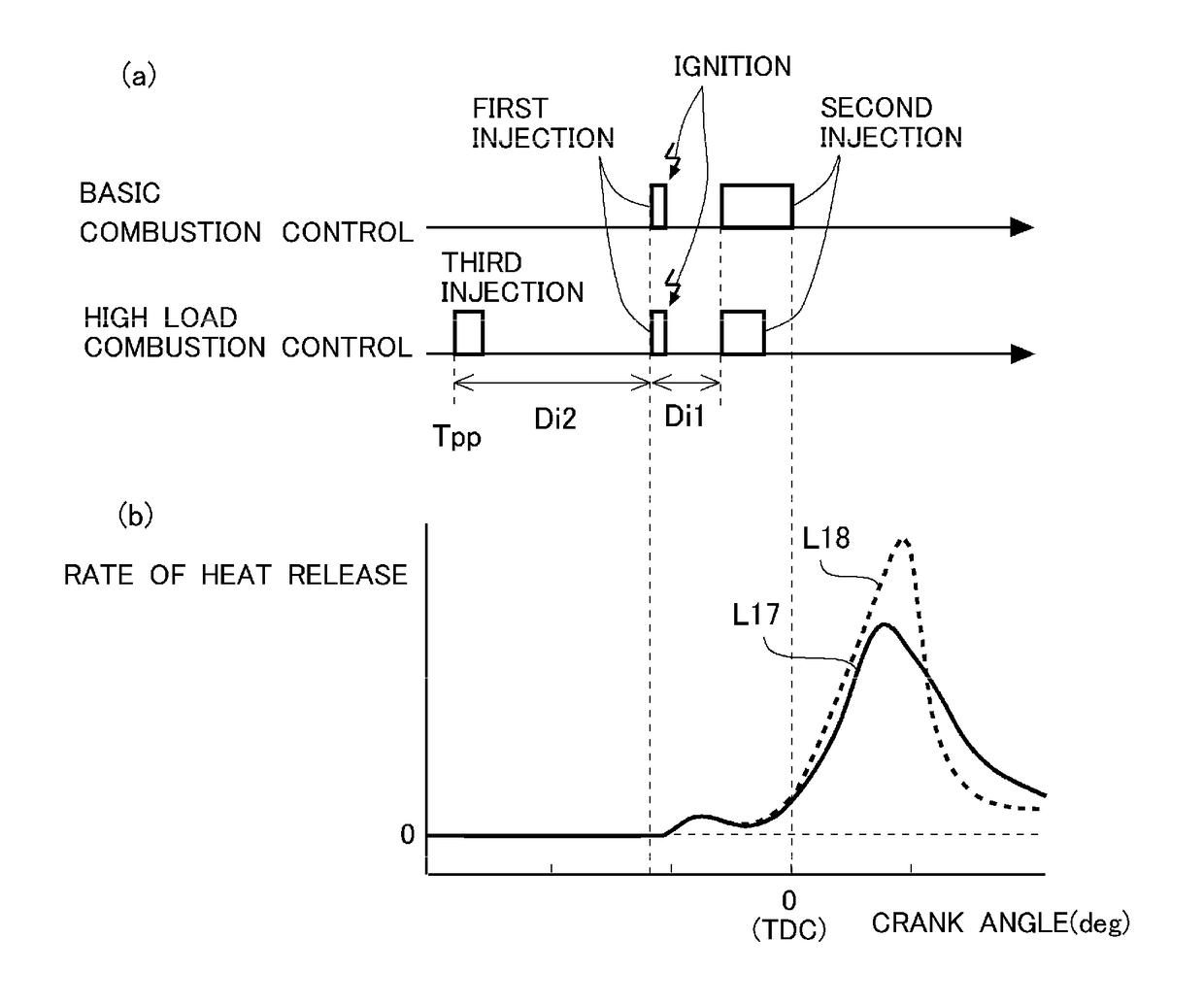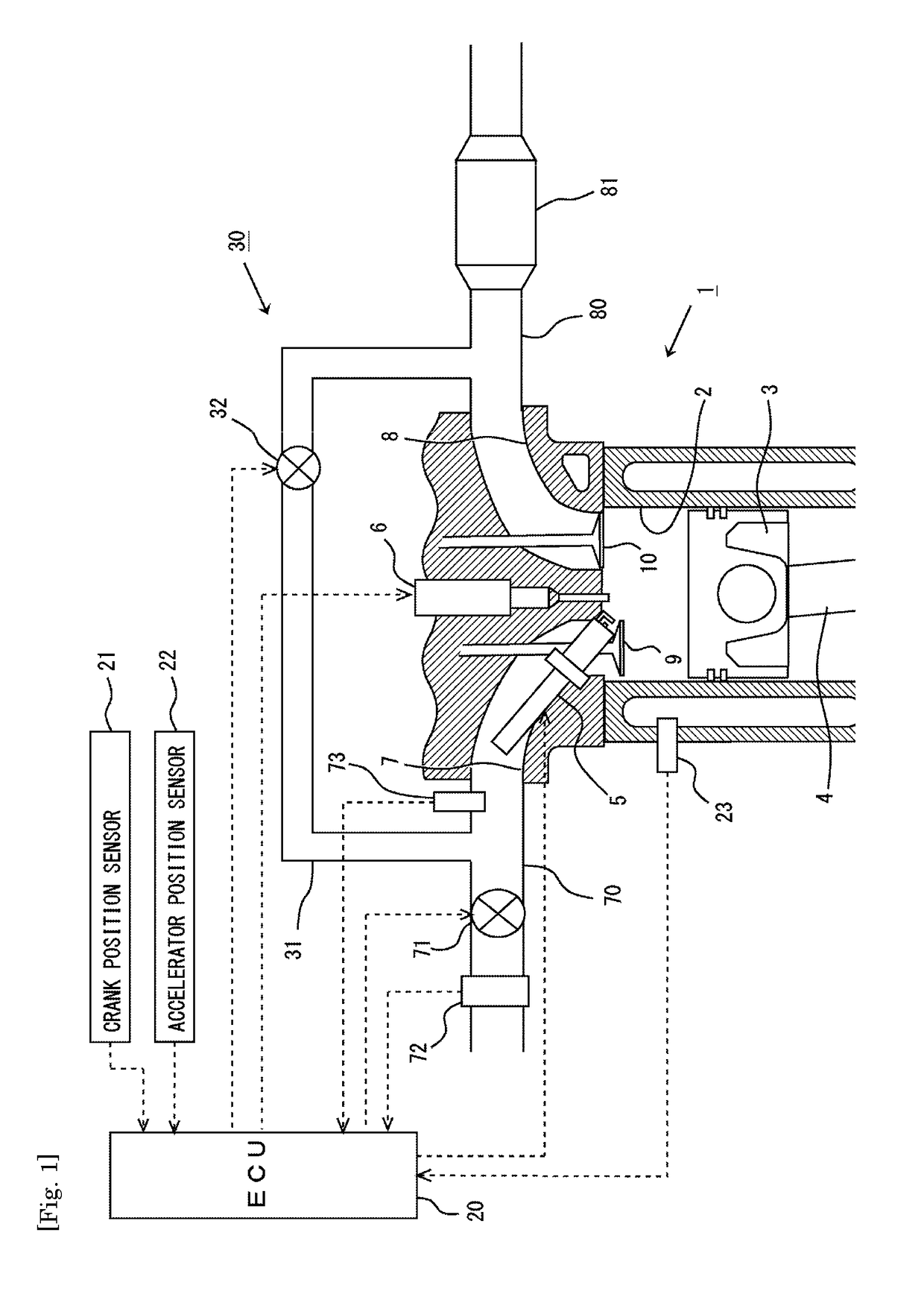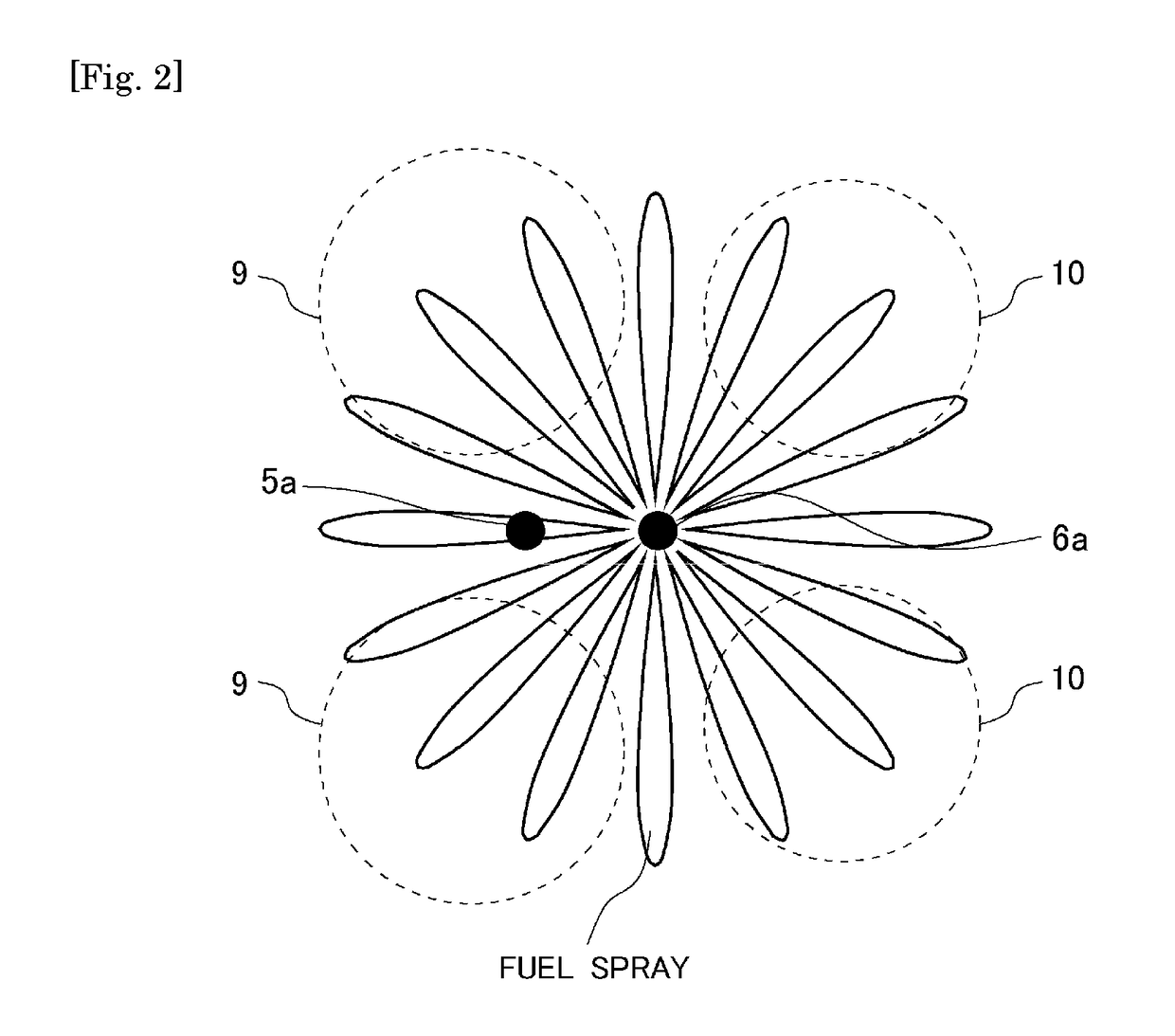Control apparatus for internal combustion engine
a control apparatus and internal combustion engine technology, applied in the direction of electric control, combustion engines, machines/engines, etc., can solve the problems that the internal combustion engine and/or the combustion noise cannot meet the requirements, and achieve the effect of preventing the deterioration of the ignitability of the pre-spray by the ignition device, reducing the amount of smoke generated, and reducing the quantity of oxygen available for combustion of the second injected fuel
- Summary
- Abstract
- Description
- Claims
- Application Information
AI Technical Summary
Benefits of technology
Problems solved by technology
Method used
Image
Examples
example 1
[0068]FIG. 1 is a diagram showing the general configuration of the air-intake and exhaust systems of an internal combustion engine to which the present invention is applied. The internal combustion engine 1 shown in FIG. 1 is a four-stroke-cycle, spark-ignition internal combustion engine (gasoline engine) having a plurality of cylinders. FIG. 1 shows only one of the plurality of cylinders.
[0069]In each cylinder 2 of the internal combustion engine 1, a piston 3 is provided in a slidable manner. The piston 3 is linked with an output shaft (crankshaft), which is not shown in the drawings, by a connecting rod 4. The interior of the cylinder 2 is in communication with intake ports 7 and exhaust ports 8. An end of the intake port 7 opening into the cylinder 2 is opened / closed by an intake valve 9. An end of the exhaust port 8 opening into the cylinder 2 is opened / closed by an exhaust valve 10. The intake valve 9 and the exhaust valve 10 are driven to be opened / closed respectively by an in...
example 2
[0179]In this example, operation ranges equivalent to the low load range R3, the middle load range R4, and the high load range R5 shown in FIG. 16 will be referred to as low load range R3, first middle load range R4, and second middle load range R5. In this example also, the basic combustion control and the transient operation control same as those in example 1 are performed in the low load range R3, the first middle load range R4, and the second middle load range R5. In this example, the operation range in which the engine load is higher than the second middle load range will be referred to as high load range, in which high load combustion control is performed. In the following, the high load combustion control according to this example will be described.
[0180]
[0181]In the internal combustion engine 1, when the engine load increases, it is necessary to increase the quantity of fuel injected into the combustion chamber. However, as described above, if the second injected fuel quanti...
example 3
[0234]In example 3, the base combustion control same as that in example 1 is performed. In this example, when the engine temperature of the internal combustion engine 1 is low, the supply of EGR gas into the intake air by the EGR apparatus 30 is suspended in order to raise the temperature of the internal combustion engine 1 and the exhaust gas quickly.
[0235]
[0236]In the following, a control flow of the EGR control according to this example will be described with reference to FIG. 23. FIG. 23 is a flow chart of the control flow of the EGR control according to this example. Steps S101 through S104 in this flow are the same as those in the flow shown in FIG. 12, and the processing in these steps will not be described. This control flow is stored in the ECU 20 in advance and carried out repeatedly at predetermined intervals by executing a control program stored in the ECU 20 while the internal combustion engine 1 is operating.
[0237]In this flow, firstly in step S601, it is determined wh...
PUM
 Login to View More
Login to View More Abstract
Description
Claims
Application Information
 Login to View More
Login to View More - R&D
- Intellectual Property
- Life Sciences
- Materials
- Tech Scout
- Unparalleled Data Quality
- Higher Quality Content
- 60% Fewer Hallucinations
Browse by: Latest US Patents, China's latest patents, Technical Efficacy Thesaurus, Application Domain, Technology Topic, Popular Technical Reports.
© 2025 PatSnap. All rights reserved.Legal|Privacy policy|Modern Slavery Act Transparency Statement|Sitemap|About US| Contact US: help@patsnap.com



